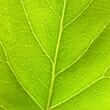Background
- Chlorophyll is a chemoprotein commonly known for its contribution to the green pigmentation in plants, and is related to protoheme, the red pigment of blood. It can be obtained from green leafy vegetables (broccoli, Brussel sprouts, cabbage, lettuce, and spinach), algae (Chlorella and Spirulina), wheat grass, and numerous herbs (alfalfa, damiana, nettle, and parsley).
- Chlorophyll has been used traditionally to improve bad breath and other forms of body odor including odors of the urine, feces, and infected wounds. More recently chlorophyll has been used to aid in the removal of various toxins via the liver and remains a key compound for improving the function of essential detoxification pathways. Supportive evidence suggests it may be used as an anti-inflammatory agent for conditions, such as pancreatitis as well as exhibiting potent antioxidant and chemoprotective activities. Scientific research has demonstrated it may be an effective therapeutic agent in the treatment of herpes simplex, benign breast disease, chemoprevention, tuberculosis, and rheumatoid arthritis. Type 2 diabetes and obesity are also being explored as areas where chlorophyll can also be used.
References
- Abbott BL. ABCG2 (BCRP) expression in normal and malignant hematopoietic cells. Hematol Oncol 2003;21(3):115-130.
View Abstract - Acheson DW, Flegg PJ. Diagnostic delay due to chlorophyll in oral rehydration solution. Lancet 1-17-1987;1(8525):171.
View Abstract - Adida A, Spener F. Intracellular lipid binding proteins and nuclear receptors involved in branched-chain fatty acid signaling. Prostaglandins Leukot Essent Fatty Acids 2002;67(2-3):91-98.
View Abstract - Bezpalov VG, Barash NI, Ivanova OA, et al. [Investigation of the drug "Mamoclam" for the treatment of patients with fibroadenomatosis of the breast]. Vopr Onkol 2005;51(2):236-241.
View Abstract - Egner PA, Munoz A, Kensler TW. Chemoprevention with chlorophyllin in individuals exposed to dietary aflatoxin. Mutat.Res 2003;523-524:209-216.
View Abstract - Fahey JW, Stephenson KK, Dinkova-Kostova AT, et al. Chlorophyll, chlorophyllin and related tetrapyrroles are significant inducers of mammalian phase 2 cytoprotective genes. Carcinogenesis 2005;26(7):1247-1255.
View Abstract - Lim DS, Ko SH, Kim SJ, et al. Photoinactivation of vesicular stomatitis virus by a photodynamic agent, chlorophyll derivatives from silkworm excreta. J Photochem Photobiol B 2002;67(3):149-156.
View Abstract - Lozovskaia ME. [Effectiveness of using the biologically active additive to food from Laminaria in adolescents during complex treatment of the pulmonary tuberculosis]. Vopr Pitan 2005;74(1):40-43.
View Abstract - Mukherji M, Schofield CJ, Wierzbicki AS, et al. The chemical biology of branched-chain lipid metabolism. Prog Lipid Res 2003;42(5):359-376.
View Abstract - Nagayama J, Takasuga T, Tsuji H, et al. Promotive excretion of causative agents of Yusho by one year intake of FBRA in Japanese people. Fukuoka Igaku Zasshi 2005;96(5):241-248.
View Abstract - Nagayama J, Takasuga T, Tsuji H, et al. Active elimination of causative PCDFs/DDs congeners of Yusho by one year intake of FBRA in Japanese people. Fukuoka Igaku Zasshi 2003;94(5):118-125.
View Abstract - Schluter A, Yubero P, Iglesias R, et al. The chlorophyll-derived metabolite phytanic acid induces white adipocyte differentiation. Int J Obes Relat Metab Disord 2002;26(9):1277-1280.
View Abstract - Sugiyama C, Nakandakari N, Hayatsu H, et al. Preventive effects of chlorophyllin fixed on chitosan towards DNA adduct formation of 3-amino-1-methyl-5H-pyrido [4,3-b]indole in CDF1 mice. Biol Pharm Bull 2002;25(4):520-522.
View Abstract - Tajmir-Riahi HA, Neault JF, Diamantoglou S. DNA adducts with chlorophyll and chlorophyllin as antimutagenic agents: synthesis, stability, and structural features. Methods Mol Biol 2004;274:159-171.
View Abstract - Tsukagoshi S. [Development of a novel photosensitizer, talaporfin sodium, for the photodynamic therapy (PDT)]. Gan To Kagaku Ryoho 2004;31(6):979-985.
View Abstract







